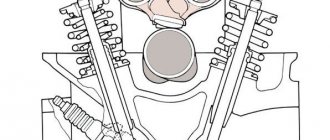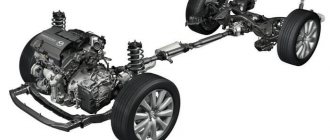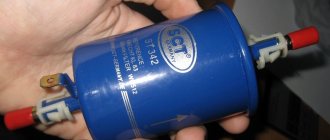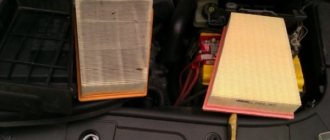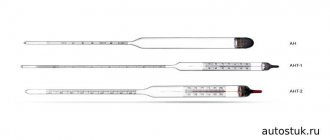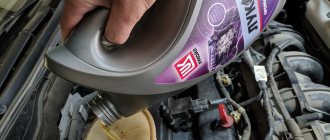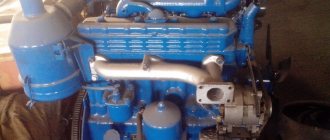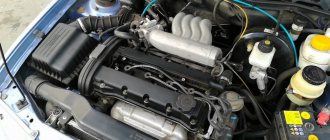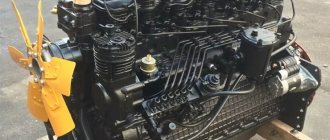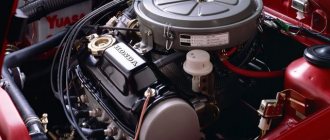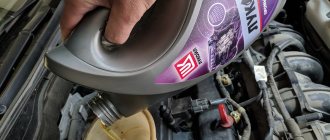Every motorist sooner or later is faced with a time when the car's fuel filter needs to be replaced. A fuel filter is a part that is capable of cleaning gasoline before it enters the engine cylinders. The cleaner the gasoline gets inside, the longer the engine will be in good condition. Since gas stations do not always fill with pure gasoline or diesel fuel, it can contain everything from sand to rust. The filter copes with such elements, and they settle on it. You cannot drive with a dirty filter, as over time its throughput decreases, power drops, or the car does not start. Then the question arises, how often to change the fuel filter.
Replacing the fuel filter
Fuel filter for injection systems
For injection engines, the requirements for fuel purification are higher than for similar carburetor models. The permissible size of microparticles should vary within 5-10 microns. This is explained by the fact that fuel is injected through injectors, the nozzles of which can become clogged. Because of this, the fuel supply process will be disrupted, which will lead to failures in engine operation and many other unpleasant consequences.
In injection engines, a fine gas filter is installed after the fuel pump, which means that it has to work under high pressure. Therefore, its body is made of aluminum or steel and does not have a glass used as a sump.
The gas filter is usually installed at the back near the fuel tank (depending on the model and make of the car). For this reason, it is more convenient to carry out the replacement by placing the car on a viewing hole or using a lift. Work to replace elements of the fuel system is permitted only after the pressure in it has been relieved.
Since the filter has an opaque body, it is difficult to control the degree of contamination, and its location is also not very conducive to visual observation.
That is why it is important to remember to replace it in a timely manner. The working life of the gas filter is indicated in the instructions accompanying it.
Regularity of TF replacement
Situations often occur when the engine begins to “tweak” when gas is added. If you do not respond to this in a timely manner, then in the near future the engine will begin to stall. And then the car owner begins to look for the reasons for this failure. The reasons, of course, can be very different, but most likely this was caused by clogged TF . Many automakers assure that the service life of this element is equal to the period of use of the car, although in practice it has been proven that this is not the case, and the filter element must be replaced after 20,000 km.
Fuel filter
If you want to increase the period of stable and efficient operation of a car engine, then do not forget about such a small but extremely important element of the fuel system as a filter device! Timely replacement of the filter will save you from expensive repairs.
Replacing the fuel filter in domestic VAZ cars should be done step by step.
Step one: disconnect the ground of the car, that is, you need to disconnect the negative terminal on the battery. This will prevent short circuits. Step two: using a 17, 19 wrench, clamp the old fuel filter, and use a 10 wrench to unscrew the fitting. In this case, you need to be very careful and careful so that the fuel does not get into your eyes or skin. Step three: you need a container into which you can drain the fuel. Step four: similar to the previous process, you need to proceed with the fitting, which is located at the end of the fuel pump filter
Step five: use a 10mm wrench to loosen the clamp to remove it. Step six: an important feature of the VAZ fuel filter is the polarity, which cannot be confused. To be completely sure, it is better to carefully study the instructions that come with the filter.
Typically, the movement of fuel is indicated by an arrow. The drawing must be on the body. Step seven: after dismantling the old part, you can install a new one. Assembly is carried out in reverse order. It is also recommended to install a new clamp clamp. This part will contribute to the smooth and long-term operation of the equipment.
To avoid getting yourself dirty with fuel while working, it is better to release the pressure by pressing on the frame spool. This procedure can be done using a fuse. It needs to be removed, the engine should run until it stalls. After installation, you should test the new filter in practice - turn on the engine. You should also check whether there is a gasoline leak or not. When traces of fuel are visible, there may be problems with the rubber rings. It needs to be replaced as soon as possible. Replacing an old fuel filter with a new one is not such a complicated procedure; it can be done at home. This will allow the fuel system and engine to operate for a very long period. In addition, it will be possible to reduce gasoline costs. By the way, fuels and lubricants, even despite their seemingly impeccable appearance, contain a huge amount of small particles. This includes dust, dirt, tar, and condensation. Contamination may occur due to the container that is responsible for storing fuel. Accordingly, the formation of particles is preceded by chemical processes that occur in this vessel. Therefore, you always need to check the technical condition of the car in order to avoid serious disruptions in its operation.
Replacing the filter or its components
On some machine models, a complete filter replacement is provided.
In this case, you need to install the new filter in reverse order. But this method is not economical and requires large expenses. Therefore, on some brands, only part of the filter is changed. This procedure requires careful work and a lot of time. First, you need to remove the water sensor, which is installed in the housing using a thread. After that, you can start unscrewing the bolts that are designed for TORX screwdrivers. Finally the cartridge (the filter element that needs to be replaced) is visible. Using pliers or a hammer and chisel, we remove or knock it out of the base. And finally, you need to thoroughly clean all surfaces.
Our goal is to provide a perfectly dry and clean surface. In car repair shops, compressed air is usually used. This method allows you to remove all foreign objects and dry the surface in a fairly short period of time. Without a compressor you will have to spend a lot more time and effort
It is important to find a large number of clean, lint-free rags and wipe the surface dry. As a result, you should get a perfectly clean, sparkling dry filter housing
After which, you can proceed to the final stage.
You can install a new filter cartridge.
It is better to tighten the water sensor by hand, but until it stops. After all manipulations with the filter, it can be put back together. We install it in its rightful place and connect the fuel pipes in the same sequence as they were. We put on the fender liner and screw the wheel into place. We lower the car to the ground. But that is not all.
The filter is empty, which means the car will not start. For a successful start, you need to pump out all the excess air. In order not to crash into the pumping system, some manufacturers have provided a special bulb. Bleed the air until the car starts.
But it is best to turn to specialists. The car service center employs experienced people who can quickly and efficiently replace the fuel filter. In this case, you will have a full guarantee of a positive result.
You can find quality service at Uremont.com. It's simple, leave a request for a service and choose a suitable car service. Repair your car quickly, efficiently, and profitably with us.
What is a fuel filter
A fuel filter is a necessary element of any fuel system of any car. Its main task is to pass fuel through itself and filter out particles of dust, dirt, rust and impurities. That is, filter the fuel before feeding it into the engine. If it were not for the operation of the filter, then all the sediments and deposits present in the fuel would clog the holes in the engine chambers, which would lead to rapid failure of the power unit.
The fuel systems of cars produced today can be divided into three categories:
- carburetor;
- injection;
- diesel
Each of them has its own structural and functional features.
Cleaning filter for carburetor cars
Working together with the carburetor, the filter receives fuel from the gas pump and cleans it of impurities. The task is to retain even the smallest particles, since the risk of clogging the nozzle holes is very high.
It itself is usually made of transparent nylon so that the car owner can visually determine the degree of contamination. Filtration quality is not higher than 20 microns.
Has a simple design and mediocre cleaning characteristics
Injector filter
The filter element is made of steel or light alloy materials, since only this design can withstand high pressure in the system. Injection engines are very capricious regarding the quality of the fuel consumed, so consumables have the highest quality filtration - from 5 to 10 microns.
Cardboard inserts are located under the mesh
Filtration of diesel systems
Fuel filters also provide a very high degree of purification. At the same time (due to the composition of diesel fuel) they have devices for detecting moisture. When a critical amount of condensate accumulates in the car interior, an alarm goes off.
Molded body and two fittings for connecting hoses. Non-collapsible design
Types of TF
As mentioned above, the type of filter device installed in the car depends on the type of power unit. Today, vehicles with carburetor or injection engines are equipped with a gasoline filter, while vehicles with a diesel engine are equipped with filter devices of a different system.
Carburetor fuel filter
There are the following types of filter devices :
- Fuel filter for carburetor engine. In this type of power unit, relatively low pressure is pumped inside the system. Fuel flows through rubber gas hoses. These motors are equipped with a metal or plastic filter device. The filter is equipped with two tubes that operate for fuel inlet and outlet. The fuel cell hose is secured to the filter with two secure clamps.
- Injector filter element. This power unit is distinguished by electronic fuel injection separately into all cylinders. The fuel is constantly in the system under high pressure. That is why the injection system has a metal fuel line, and the filter device is made of steel and other light alloy materials and is usually equipped with a threaded connection.
- Diesel engine filter. It is no secret that domestic diesel fuel is not of decent quality and has a large number of various impurities, so it must be thoroughly cleaned before entering the power unit. No less dangerous for the engine comes from paraffins, which, when crystallized, clog the smallest gaps in the system parts. That is why many cars with diesel internal combustion engines install 2 filters - the main TF and the auxiliary one. This makes it possible to achieve one hundred percent purification of the working mixture from water and almost complete purification of various “garbage”.
Diesel fuel filter
Stages of work
The first and most important rule will be compliance with safety regulations and all relevant requirements. Violation of which can be dangerous to the life of the car owner. Safety regulations:
- Do not smoke or change near a fire source. Even the smallest spark can cause a severe fire.
- It is necessary to have a working fire extinguisher on hand. This will allow you to quickly and efficiently put out a fire.
- After carrying out all the work, you must thoroughly wash your hands and remove traces of gasoline from your clothes.
Along with the question of when to change the fuel filter, information about the required set of tools also becomes relevant. Here the driver will have enough: a set of wrenches (10, 17, 19).
REPLACEMENT
There are many reasons why the internal combustion engine has become unstable. And before changing the fuel filter on a VAZ 2114, you need to make sure that the issue is a clogged element. In any case, if the gasoline filter is clogged, the fuel supply will be uneven and the pressure in the fuel system will decrease. The pressure is checked with a pressure gauge, which is built into the car's fuel line.
Check pressure in several modes:
- Idling;
- At high speeds;
- When the return pipe is pinched;
- With the engine turned off.
We turn on the ignition, the fuel pump immediately pumps gasoline into the system, and pressure appears. The pressure gauge should record a figure of about 3 atm. We start the engine and let it run at idle speed (2.5 atm.). When over-gassing, the pressure gauge needle in a working fuel system can rise to the number “3” and drop to 2.5 atm when the speed is reduced. When the return line is compressed, the pressure rises to 6-7 atmospheres. When the engine stops, the pressure should drop slowly, and the pressure gauge needle cannot suddenly go to zero. But a clogged filter is not the only reason for a drop in fuel pressure in the gasoline circuit. Signs of a bad fuel filter may be misinterpreted. Here it can:
- Possess a low performance fuel pump;
- The fuel pressure regulator may be faulty.
Is it worth changing
Replacing the fuel filter on a VAZ 2110
The fuel filter is only one of the components of the entire fuel system, and despite the fact that its work itself is not mechanically involved, its role in the entire system is so important that without it, other components wear out much faster. In other words, the fuel filter acts as a filter whose role is to remove unwanted components (dust, dirt, sediment). After a certain time, it becomes clogged and ceases to perform its function, which leads to problems throughout the fuel system, primarily affecting the injectors and high pressure pump (HP pump).
The fuel filter is an inconspicuous part that plays an important role in the proper operation of the engine. Usually we do not notice how much it affects the operation of the fuel system, but when the consequences make themselves felt, most car owners blame the car manufacturers and condemn the unreliability of the engine. Excessive contamination impedes the free flow of fuel into the engine, and an insufficient air-fuel mixture leads to a number of problems
The most common symptoms of a clogged filter:
- decreased engine efficiency;
- problems with starting the engine, especially in cars with a diesel engine;
- the appearance of thick smoke in the exhaust pipe;
- fuel leak from the exhaust pipe;
- higher fuel consumption;
- loss of power, especially if the gas pedal is suddenly pressed, which is especially noticeable, for example, when overtaking;
A clogged filter can damage the injection system in turbodiesels and direct injection in gasoline engines, so replacing the filter is a priority due to cost. Despite the fact that older engines are more resistant to low quality fuel, replacement should not be ignored, it will cost more
Coarse and fine filters: device and principle of operation
As noted earlier, coarse and fine fuel filters are the most important elements of the fuel system, based on their specialization. In modern cars, as a rule, both of these parts are used, however, it also happens that carburetor engines are equipped only with a coarse filter element, given that the holes in the nozzles are quite large and small impurities are unable to “clog” them. For injection and especially diesel engines, not using a fine fuel filter is simply fatal, since the injectors of their fuel distribution mechanisms are extremely sensitive to all impurities present in the fuel, so their presence can “kill” these vehicle components in a short time.
Regardless of the type of fuel system of the machine, the fuel filters in it can be located in one of the following ways:
in the form of a single filter consisting of elements of coarse and fine filtration of gasoline or diesel (used on small-displacement units, since the volume of incoming fuel in such units is low and such a unit is capable of filtering it without any delays);
in the form of units built into the gas pump or tank (they are an excellent alternative to the previous type of organization of the filter system);
in the form of separate units, that is, the coarse filtration fuel filter is a specific part, and the fine filtration element is exactly the same element of the car (as a rule, such units are used in cars that require cleaning a large amount of fuel).
In any of the types presented above, filter elements work according to the following principle:
- Having gone through the primary stages of filtration, the fuel enters a hard-cleaning fuel filter, which filters out all the more or less large fractions remaining in it. How large such impurities will be is determined based on the cell size of the filter element used, which are measured in microns and have an individual standard for each car.
- After rough cleaning, the fuel goes through the final stage of filtration through a fine filter element. The maximum size of filtered impurities is determined in a similar manner to the previously described method.
The coarse fuel filter performs two main functions: it cleans the fuel from moisture and large impurities (at least 0.1 mm in size), and its “brother” is responsible for filtering the fuel from smaller impurities that can be dangerous for the fuel distribution mechanisms of the car and its engine.
Important! Only in combination are fine and coarse fuel filters capable of efficiently filtering the fuel entering the tank, therefore, if any problems arise with one of these components, they must be eliminated immediately. Otherwise, there will be no special effect from the filtration, and the car will begin to behave extremely strangely: poor starting, loss of power, increased consumption, etc.. In general, dividing fuel filters into elements for coarse and fine cleaning of fuel is a very good move automotive engineers
Such an organization of the system allows you to protect many vehicle components from premature wear. We hope that the previously presented material was useful to you. Good luck on the roads!
In general, dividing fuel filters into elements for coarse and fine cleaning of fuel is a very successful move by automotive engineers. Such an organization of the system allows you to protect many vehicle components from premature wear. We hope that the previously presented material was useful to you. Good luck on the roads!
Fuel filter for diesel engine
Owners of diesel vehicles know that diesel fuel and water are two incompatible elements. The task of the filter system, in addition to cleaning from foreign solid impurities, is to separate water from diesel fuel. For this reason, the diesel fine filter has a sump.
The filter housing is dismountable. Thanks to this, when the filter element reaches the end of its life, it is possible to replace only the element itself without changing everything else. The water accumulated during the filtration of diesel fuel is drained through a valve installed in the body of the settling cup.
In addition, for use in winter, the filter is equipped with a heating element. This is due to the property of diesel fuel to crystallize at low temperatures. Diesel fuel contains paraffin, which, when frozen in the cold, clogs the filter cavities. When this happens, a heater comes to the rescue, melting this paraffin and then maintaining the optimal temperature of the fuel.
Symptoms indicating a faulty fuel filter
- The engine starts with difficulty.
- Unstable engine operation at idle speed.
- When you press the gas pedal sharply, you feel a dip in the engine.
- Power drop. This is especially noticeable when accelerating or working under load.
- Misfire of the combustible mixture.
Of course, the same symptoms can be observed if the nozzles on the injector are dirty. But it’s always better to start troubleshooting with the “lesser evil”, because changing the filter is easier than washing the injectors. Clogged injectors are a consequence of untimely replacement of fuel system consumables.
As for the prices for fine fuel filters, they depend on the type of engine, make and model of the car, as well as on the region of residence. It can be noted that filters produced for carburetor engines have the lowest cost. Next come the injection ones. Well, the most expensive ones are for diesel engines, but for a diesel engine the filters are reusable, therefore, having bought it once, only the filter element will need to be changed periodically.
But no matter what the price of the filter, engine repair will in any case cost tens of times more. Hence the conclusion - timely replacement of filters is the key to the health of the car.
How can you tell if the filter is clogged?
A clogged filter can lead to driving problems - it allows less fuel to pass through than is necessary for normal engine operation. This, as a result, threatens to stop the car and even break the engine. Contamination also contributes to the breakdown of other parts - it clogs fuel injectors and valves.
Symptoms of a clogged fuel filter:
- significant excess fuel consumption;
- the engine does not start well;
- its power decreases - there is no traction, the car accelerates poorly (especially when driving uphill);
- sharp acceleration threatens to turn into a stalled engine;
- at idle speed there is uneven operation of the engine;
- Spontaneous braking of the car may occur without driver intervention.
It should be noted that the signs of a clogged fuel filter may be similar to problems with other components and systems.
- fuel pump;
- air filter contamination;
- the control unit has failed;
- crankshaft position sensors are faulty;
- the throttle valve is in the wrong position;
- the candles became unusable;
- The idle speed controller has failed.
However, if the problem does not arise with the filter, then you need to pay attention to additional undesirable signs in the operation of the car
Device
The fuel filter comes in two types of fineness:
- rough cleaning (preliminary);
- fine cleaning (final).
In addition to the main filter elements, the diesel power unit has a separator, which consists directly of the filter itself, as well as a water separator. This combined device is explained by the high concentration of condensate in diesel fuel.
The gasoline engine does not have a water separator due to its obsolescence. Rough fuel cleaning occurs through a fuel intake or a filter element of a submersible pump. Often these are metal/synthetic meshes. Fine cleaning is the final link in the fuel filtration process. The filter element can be integrated directly into the pump or line through which the fuel flows. The gasoline power unit is equipped with a non-separable filtration element, consisting of a housing (“glass”) and a filter. The combustible mixture enters this element using inlet/outlet fittings. Sometimes plastic tubes with fittings are integrated onto the fittings.
Reasons why an element needs to be changed
Basic:
- replacing the filter due to its wear due to the harmful effects of resins;
- corrosion processes associated with high concentrations of condensate;
- malfunction of the filter element itself - due to its natural wear and so on.
How often to change
Timely replacement prevents incorrect operation of the power plant. The fuel filter varies depending on the specific brand of car, mileage, operating conditions: quality of fuel being poured, climate, etc.
Not everyone follows this recommendation, justifying it by saving material resources. The result is various internal combustion engine malfunctions. In addition, a worn filter is not able to protect the power unit from various contaminants. They penetrate the motor and create additional friction between the components, which leads to loss of power.
Signs of a clogged filter
Briefly about the symptoms that indicate the filter device is not working:
- The car's power unit began to work unevenly. The internal combustion engine “troits”, its speed either drops or increases.
- From time to time, especially when driving uphill, the car’s engine loses power and its traction decreases. To make up for power, the driver has to press the gas harder.
- If the car drives uphill at low speeds, the engine may stall. In this case, pressing the gas pedal will not produce results.
- If the car is equipped with an automatic transmission, then problems may arise in shifting gears. This is due to the fact that the internal combustion engine incorrectly transmits commands from the engine and shifts gears at the wrong time.
- Fuel consumption increases.
Replacement on different types of engines
Regardless of what make and year of manufacture your car is, you will need a standard set of tools to dismantle and install the filter element:
- open-end wrenches;
- screwdriver with a thin flat blade;
- pliers;
- WD-40;
- clean fuel container;
- rags.
How to remove a filter from a carburetor engine
The procedure is made as easy as possible by the fact that the filter is installed in the engine compartment of the car. That is, it is enough to wait until the engine cools down, and then begin dismantling.
The order of work after releasing the pressure in the fuel system looks like this:
- Open the hood.
- The filter itself is located near the brake fluid reservoir, near the carburetor.
- Unscrew the clamps securing the two hoses.
- Remove the fuel hoses from the sides. Fuel may leak, so it is better to place a container or a rag under the holes in advance.
Disconnecting the fuel lines
Accordingly, installation of the new element is carried out in the reverse order.
How to remove the fuel filter on injection car models
The work will be somewhat more difficult than in the previous case. On injectors, the part is located under the bottom, so you will first need to either drive the car into an inspection hole or jack it up high.
In this case, the precautions will be the same as when working with carburetor engines: before dismantling, you will need to relieve the pressure in the system. Further work is carried out according to the following scheme:
- Find the fuel pump in the center of the rear beam.
- It is usually difficult to unscrew the nuts the first time, so it is recommended to lubricate the joints with WD-40 first.
- After this, unscrew the two connecting nuts and remove the fuel pipes (place containers in advance to drain the remaining fuel).
- Remove the filter along with the rubber seals from the bracket.
- After which you can install a new one in the free space.
The main thing is to create comfortable working conditions
How to clean
In most cases of dirty fuel filters, you can get by with regular washing/purging rather than buying a new replacement element. The cleaning procedure involves dismantling the device and disassembling the device body:
- After removing the filter, wipe it with a dry, lint-free cloth.
- Unscrew the cover securing bolts and remove the cover.
- Remove the filter element itself from the housing.
- Also wipe the interior of the case with a clean, lint-free cloth.
- Place the plug and the filter itself in a container with acetone. After washing, it is recommended to thoroughly blow out both elements with air from a tire pump or a can of compressed air.
- A new sealing ring is pulled onto the dried part.
- The cleaned filter is installed in place, two fuel lines are connected to it.
- Before screwing on the filter cap, fill it with fuel to the brim.
- After this, you can close the plug.
Where is the filter located in the car?
Before moving on to the question of how to replace the fuel filter, you need to figure out where exactly it is located. Guided by the task assigned to the filter element, the most logical place for its location is on the way from the gas tank to the engine .
Moreover, the location of the filter varies greatly among different brands of cars.
For example, Japanese manufacturers make a filter in the same housing as the fuel pump. Install the device directly in the gas tank. But this design has two significant drawbacks:
- The fuel filter can only be replaced at a car service center;
- Often the breakdown of a given device is immediately followed by a complete replacement of the unit.
If we talk about the domestic automobile industry, then on the VAZ “classic” the filter is located under the hood, this facilitates convenient monitoring of the condition of the fuel filter and its quick replacement. On later Lada cars, the filter device was “hidden” in the rear beam, under the bumper.
Well, if we speak generally about the most popular locations for the fuel filter, we can list the following:
- rear bumper;
- in a niche on the bottom;
- in the fuel tank;
- engine compartment or in the engine compartment.
A separator/FPO can be installed separately (on the frame) in the vehicle.
Fuel filter location
Where is
There can be no clear answer to this question. Depending on the vehicle model and the type of fuel system used, a variety of positions may be designated. However, in any case, the location will be between the engine and the fuel tank, because the pump pumps fuel from the gas tank to the engine. Therefore, the advisability of placing the filter in this interval is beyond doubt.
On carburetor models it is installed directly under the hood near the carburetor. Therefore, finding this element and dismantling it is quite simple.
After lifting the hood you can immediately see this element
In injection-type cars, the part is located under the bottom of the car - often on the rear beam.
It is easy to find along two highways
In diesel engines, cleaning is carried out by a filter, which is mounted between the fuel pump and the engine. Sometimes the part is placed inside the gas tank, less often - under the bottom of the car.
Coarse filter
The fuel filter for primary (coarse) fuel cleaning has a simple design: it is a cartridge with specific filter paper inside. In addition, each one is necessarily equipped with a mesh that can allow only the smallest particles to pass through.
Structurally, it is housed in a stainless steel or plastic housing and is secured in the desired position with bolts. A small distance is always maintained between the walls of the housing and the filter itself. This gap is used to introduce paronite liners. They provide increased tightness of the device. At the bottom there is a damper.
Fine filters
Such parts that are intended for secondary (fine) cleaning can be of two types:
- collapsible (which, in case of malfunctions, can be disassembled and the filter element replaced);
- non-removable (they are considered disposable, since they must be replaced in case of malfunctions).
They are usually changed more often than coarse cleaning, if we talk about diesel engines. Structurally, the parts are similar in structure to filters for primary purification, but have tiny holes in the mesh to trap particles and impurities with a diameter of less than 0.01 mm.
Design features
Three-stage device for filtering diesel fuel.
Fuel filters for diesel cars are different from devices designed to filter gasoline. A diesel engine is very sensitive to the quality of fuel; for its stable operation it is necessary to use the most purified fuel possible. Therefore, cars running on diesel fuel have three degrees of purification of the combustible mixture:
- Cleaning the gas tank. A special mesh prevents the entry of contaminants into the fuel system.
- Rough cleaning. Prevents the entry of large particles.
- Fine cleaning. Designed to trap small dirt particles that can clog injectors.
In addition to preventing the entry of small particles of dust, soot, plants, and insects, the filter must prevent the penetration of water into the combustion chamber. Plus have a special heating to prevent the formation of paraffin crystals at low temperatures.
This is interesting: How often should you change the air filter on a Renault Logan
Popular questions
Change the air conditioning compressor
Posted: 12/02/2014 They brought me a Mazda CX5 in the summer, drowned woman. He changed everything before me and the car was running smoothly, but there were problems with the air conditioner. In general, I tinkered with it and worked with it quite a bit, at first everything seemed to be clear...
More details
Replace brake pipes
Posted: 11/24/2014 There was such a situation, we came with a friend from the dacha. The next time I needed a car, it turned out to be a breakdown. Again, we started working on this with the same friend. I’ll tell you right away the process...
More details
Replacing the thermostat
Posted: November 26, 2014 In general, I will describe to you the problem that caused me to replace the thermostat. I drove from the village to the city, I was on the road for about an hour and my horse began to boil (VAZ 2112). I was still able to get home...
More details
Replacing the oil pump
Posted: 12/06/2014 I also once had to change the oil pump myself, I didn’t have much money for service, and I heard from many that everything is quite simple and you can do it yourself. In general, I bought a set of gaskets for...
More details
Change front shock absorbers
Posted: 06/20/2014 Well, I can’t say about all the cars, but I’ll tell you about the Opel Kadett. First, unscrew the guide bolts and remove the caliper. Loosen the stabilizer link to loosen the bolts...
More details
How to remove the radiator grille
Posted: 07/19/2015 Removing and installing a new radiator grill is not a problem at all, you just need to have a screwdriver with you and let your hands grow from the right place. The problem is that lately designers have been twisting...
More details
Installation of silent blocks of front levers
Posted: 06/19/2014 Silent blocks, or as they are popularly called daisies, often fail and lead to a loose lever. The best thing about the replacement is the price; the daisies themselves on one side cost a lot...
More details
Change the engine oil
Posted: 06/08/2014 I think these video lessons will primarily be useful to girls driving. Of course, no one forces them to change the oil in the car, but different situations happen on the highway and they have to add oil...
More details
Ball joint repair
Posted: 06/14/2014 Once I helped a friend change the ball joint in his Volkswagen Polo. The seemingly simple procedure took us almost 5 hours. Difficulties arose due to the fact that literally a month before he...
More details
Replace engine oil seal
Posted: 11/30/2014 It is better to change such little things at the same time when some kind of repair is being done, for example changing the crankshaft pulley or clutch, because the work is extensive, and when it is all disassembled, there is access to them. For…
More details
